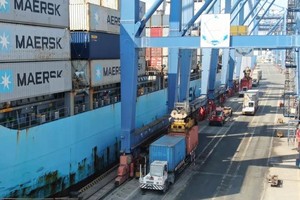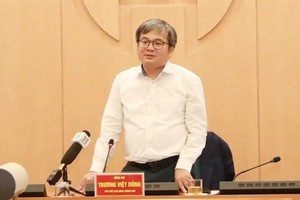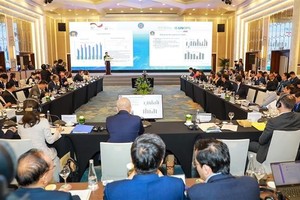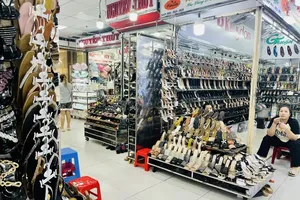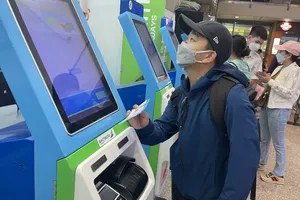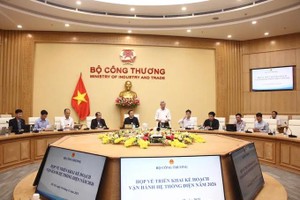The economic growth rate in the first six months of the year clearly indicates that the economy in Vietnam is still facing a multitude of difficulties in both aggregate demand and total supply. Both these factors reveal frustrating limitations that are causing slow growth.
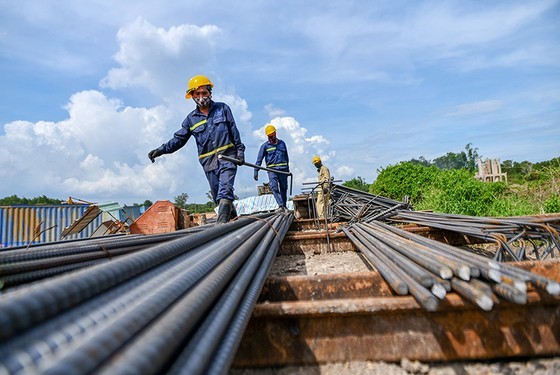 |
The current challenges may see the possibility of a 6.5 percent growth rate for the whole year. This can be evident in three aspects, namely, investments, imports and exports, and consumer spending. For these reasons, public investment may be the only strong holding factor for economic growth in the remaining months of the year.
Decline in aggregate demand
First of all, investment in the private sector is falling sharply, which also is indicative of the multitude of complex difficulties faced by the business community today. Although, investment in the non-state sector has increased by only 2.1 percent, the lowest in several years and even lower compared to two years of the Covid-19 pandemic in 2020 and 2021. Although public sector spending has increased, it can partially offset the total investment capital of the whole society when private investment increases slowly but does not yet reach the target plan.
Investment in the state sector increased by 12.6 percent over the same period, the highest growth rate in many years. Meanwhile, investment from the Foreign Direct Investment (FDI) sector decreased when registered capital in Vietnam in the first six months of 2023 reached only US$ 13.43 bln, down 4.3 percent over the same period. Total realized FDI capital reached only $ 10.02 bln, up 0.5 percent over the same period. On the other hand, in 2022 it had increased by 7.9 percent. By the end of June, it was estimated that public investment disbursement in 2023 only reached 30.49 percent of the plan, higher than in the same period in 2022 in both relative numbers at 2.74 percent, and in absolute numbers with more than VND 65,000 bln, up 40 percent.
Second, there is a serious decline in imports and exports. Export turnover in the first six months of the year decreased by 12.1 percent compared to last year, reaching $164.45 bln, with imports showing a deeper decline rate at 18.2 percent. This reflects the current great difficulties due to reduced external demand. Although the reduction in imports will support aggregate demand, it clearly reflects that the economy is facing a very strong decline, because production material accounts for nearly 90 percent of imports which are mainly from China or South Korea.
Moreover, when the import turnover falls lower than the export turnover, it proves that the business sector is facing grave difficulties such as there is no output, so there is no need to import inputs. Not every reduction in imports is reassuring because there is a good surplus, but we have to look at the input perspective when our economy is still relying on the world, so the decrease in imports is a concern for manufacturing enterprises that are facing a state of limbo.
Third, household spending is also in a lot of trouble. Total retail sales increased well in the first quarter of 2023 but gradually decreased in the second quarter, reflecting the two main factors affecting this indicator such as income and inflation. Although according to recent data, inflation is falling and spending seems to be shrinking.
The decline in aggregate demand also negatively affects the total supply of the economy. In the first six months of the year, enterprises faced many difficulties in both input costs due to rising interest rates and output deadlocks such as shortage of orders, putting production at a moderate pace.
This is most evident in the industrial production sector, especially in the processing and manufacturing industries. The index of industrial production in the second quarter of 2023 only increased slightly by 0.2 percent over the same period, in which the processing and manufacturing industry accounts for over 74 percent of the added value of the whole industry, mainly determined by the growth rate of the whole industry and the whole economy by decreasing slightly by 0.4 percent. This decrease was low, although narrower than the decrease of 2.9 percent in the first quarter.
Along with this, the Purchasing Manager Index (PMI) of the manufacturing industry in Vietnam remained below the threshold of 50 points for many consecutive months, with output and new orders decreasing, and selling prices sliding down at high speed.
Public investment needed
There is now an urgent need to tackle the difficulties faced by businesses and look at ways to revive the whole economy. Vietnam needs effective policies to support taxes and fees for businesses and people in the current scenario. Fiscal policy always has a larger lag than monetary policy, so it takes more time to affect businesses.
In the last six months, the State Bank of Vietnam has operated a flexible and proactive monetary policy to support the economy, by lowering interest rates and finding ways to increase credit for the economic and business sector. However, in the last six months, money supply growth has been low, when the total means of payment by the end of June only increased by 2.53 percent compared to the end of 2022, and even lower than during the period of the Covid-19 pandemic.
The credit growth rate also halved over the same period when credit growth was only 3.13 percent while in the same period last year, it increased by 8.51 percent. This shows that despite the supportive monetary policy, especially interest rate reduction, production is still faced with difficulties and the absorption level of enterprises is very poor. This is to say that to be able to support aggregate demand, the key point to focus on right now is probably not interest rates.
In the current context, public investment should be given more attention as a pillar for growth. Currently, the growth model is still based on investment, but now the private investment sector is gradually shrinking, so in the coming time, it needs to rely heavily on public investment. Expanding fiscal policy is associated with the efficiency of public investment, so in the remaining months of 2023, there should be a focus on improving the quality and scale of public investment to serve as a strong basis for the economy to grow.






